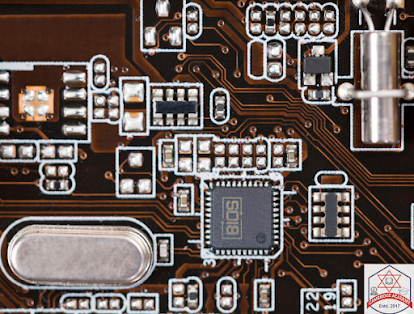Today is the age of computers and the internet. Computers
are being rapidly used in each and every field in one form or
another. Computers have become so important in some of the areas, where no
work can be possible without them.
In the present time, Computers and the Internet are being
used for various purposes such as banking and financial institutions,
agriculture, hospitals, factories, other business areas, schools, campuses,
government offices, different IT Sectors, etc. From Small to Giant Industries
is using the computer system to make their work faster and easier.
Computers and the Internet may have played a significant
role in the lives of every one of us. If nothing else, we are using
computers and the Internet to get information and News.
When We start any Computer or Phone, it is going to
start with 'BIOS' which is a very important aspect of the computer system.
In the absence of a commuter or phone, we can easily start
our day, we will search for an alternative to performing the task but in the absence
of BIOS, it is not possible to start a computer or phone.
Why is BIOS very important? What is BIOS
exactly? How does it work?
First of all, Let's know about BIOS which stands for BIOS
- Basic Input Output System. It is a very important part of our computer system
that has become such an important aspect of our lives.
When you open your computer system, a page or some
display appears on the screen. In fact, it is known as BIOS. Like other kinds of software, BIOS is also a type of software. This is the most
important part of our computer.
BIOS is a complete 'Basic Input Output
System'. Which means the basic system of input and output. It is software installed in the ROM (Read Only Memory) which is attached to the
motherboard.
BIOS is the first software that starts working after
opening the computer. If this failed to run then the computer system will
not start. BIOS runs POST (Power On Self Test) operation when we start our
computer system Which ensures that all computer hardware is connected to the system such
as RAM, processor, keyboard, mouse, hard drive, USB port, sound card, video
card, etc. are all in working condition.
Configures it after making sure it is OK with the help of
POST operation. Then Windows or any other operating system loads into the
computer memory. After loading OS (Operating System), our computer starts.
Once the computer started, other software or programs can be
run according to our needs. If something goes wrong during the POST
operation, the BIOS sends a code to the computer to fix it.
Such code is often heard as a beep when running a
computer, Which helps the computer to run the system easily by automatically
resolving it.
Where is the BIOS located? BIOS ROM
(ROM-Read only memory) is in memory.
Every Computer user can easily identify all the hardware. BIOS
is especially responsible for booting computer operating systems. The BIOS
is already installed on the computer by the manufacturer.
After that only, other hardware can be installed on the
CPU. This is the stable memory of the computer system, Which is installed
inside the ROM as well as placed on the motherboard of our computer.
We as normal computer users cannot delete BIOS even if
we want to or try to delete it. It can be updated and installed from time to
time when the manufacturer provides the latest version of BIOS. It is also known
as EEPROM (Electrically Erasable Programmable Read-Only Memory). Which can
be electronically deleted or programmed.
The motherboard is always connected to a chip called CMOS
battery (Complementary Metal Oxide Semiconductor) in which all the settings and
changes made of the BIOS are stored. CMOS is a battery that protects all
settings in the BIOS. With the help of the CMOS battery, the BIOS facilitates
the booting process of the commuter.
CMOS is a small cell or battery which preserves basic computer
information such as date and time, Location, Booting Sequence, etc. If the CMOS
battery runs out or is removed, all BIOS settings are reset as default.
We have noticed that even when we turn off and restart
the computer, there is no change in the basic information like time, date,
location, etc. because all the settings are saved in the BIOS which is always
powered by the battery of CMOS.
What
could be the function of BIOS?
The BIOS is responsible for performing a variety of
tasks, from simple to complex. Some working styles of BIOS can be changed
manually while some systems are edited. Here are some of the functions we
found to be interesting:
1. When the computer starts, then first of all the BIOS
checks all the settings in the CMOS, so that the other rest of the thing can
work perfectly.
2. The BIOS then loads the device driver, which acts as a
bridge between the operating system and the device. That is the way by which
entire hardware interacts with the software.
3. The BIOS then prepares various registers to make it
useful.
4. Once the register
is ready, the BIOS tests all hardware devices such as keyboards, mice, mouse,
RAM, Hard Disk Drive, etc. This process is called POST (Power On Self
Test).
5. After the test is completed, the BIOS finds a bootable
medium to load Operating System, then reads the medium and loads the required
file in RAM. The operating system opens only after this process is
completed.
Thus, the BIOS controls the entire computer system. This means that all the activities in the system run through it. Without the BIOS, the computer cannot start. Maybe in the future, some new technology may introduce.
You May Like:
Most Useful 61 computer shortcut keys Every Computer User need to know
How Would Be the World of Metaverse?
BlockChain Technology - The Upcoming Future






No comments